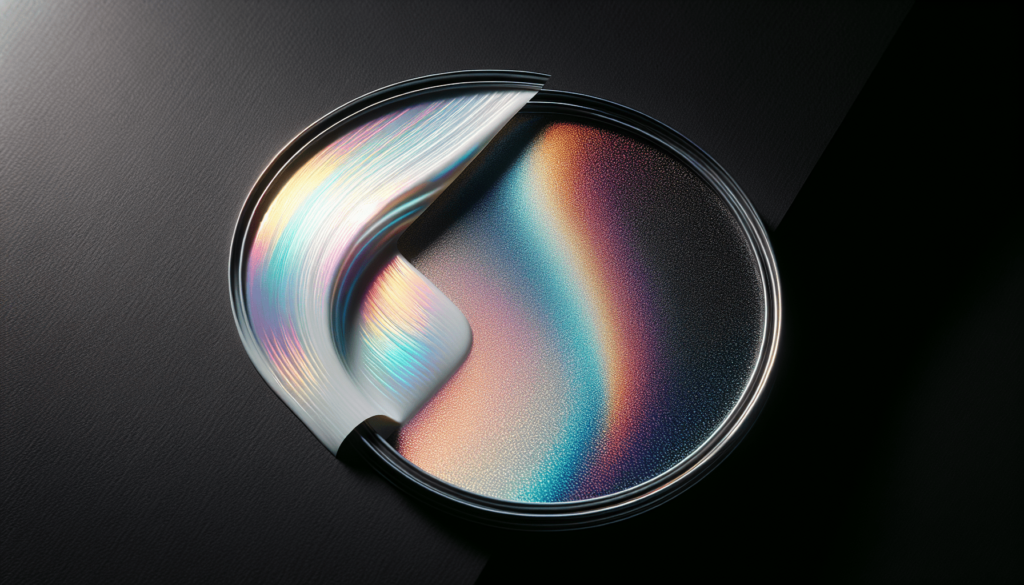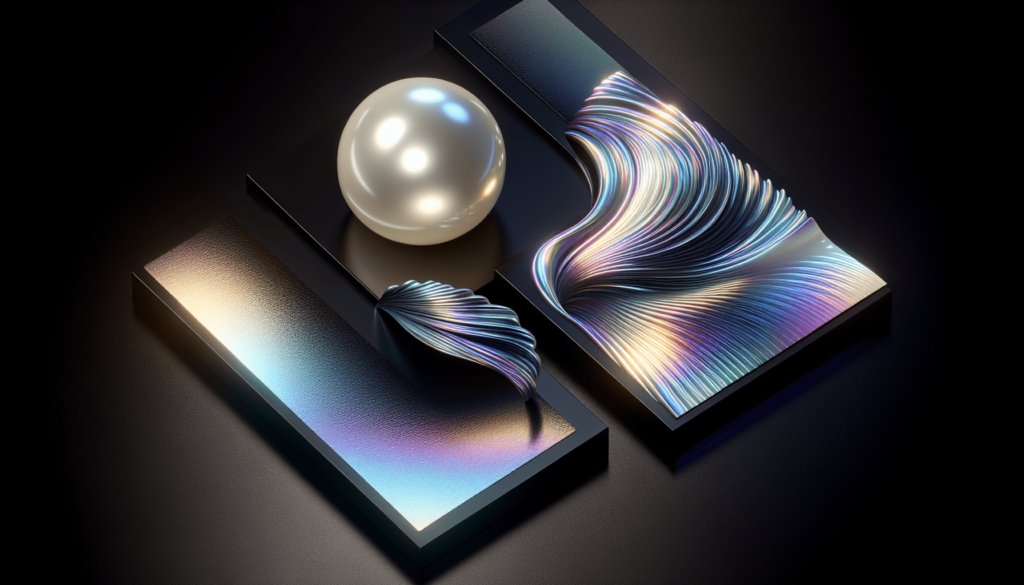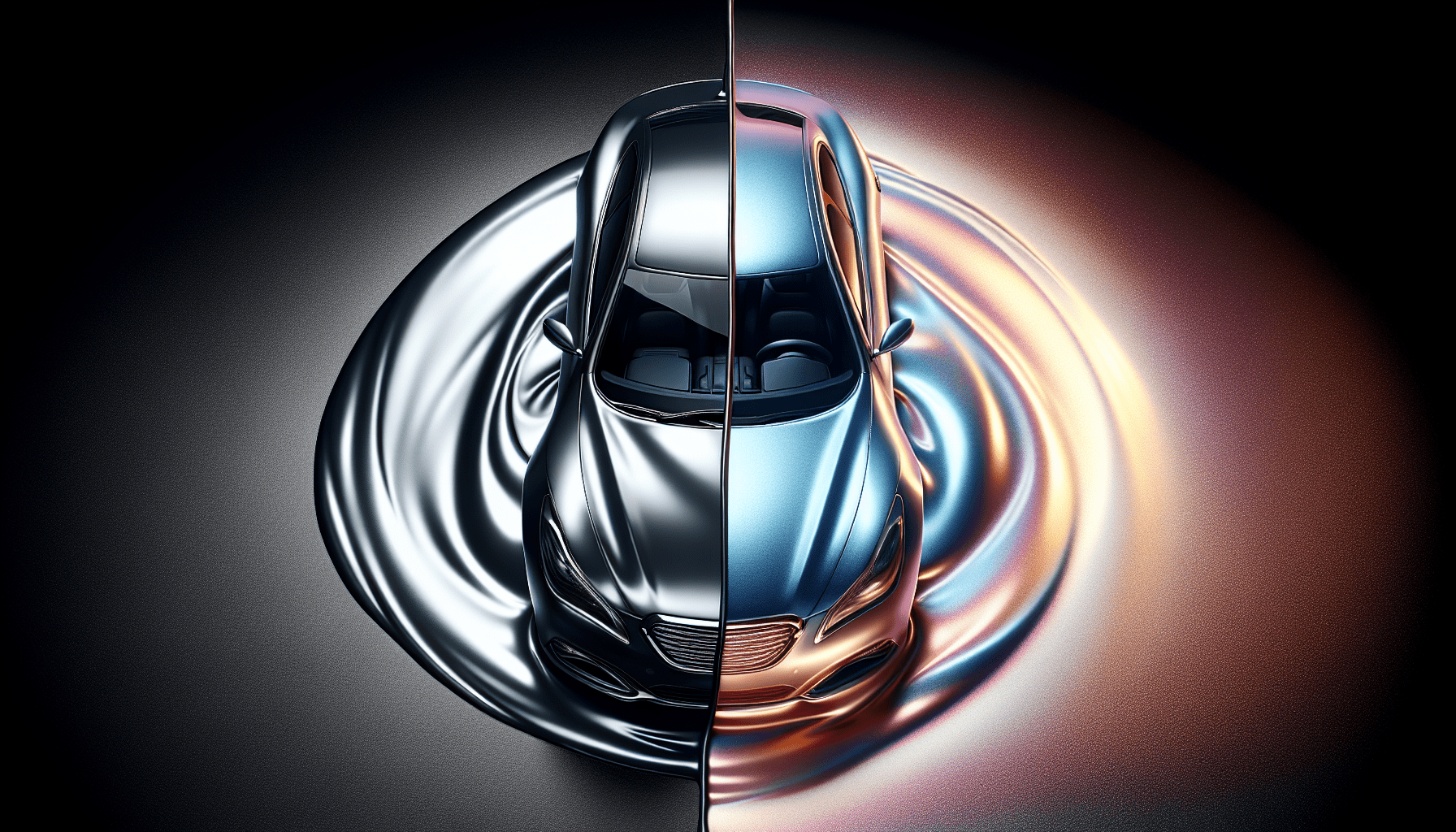Have you ever wondered what sets pearlescent and iridescent paints apart? These two types of pigments are often confused due to their stunning, multi-dimensional effects, yet they are distinct in various ways. In this article, we will break down the differences between pearlescent and iridescent paints in terms of their composition, visual effects, applications, and more. This information is valuable whether you are a professional painter, an artist, or someone interested in decorative finishes. Let’s delve into the specifics to enhance your understanding and help you make informed choices.
What is Pearlescent Paint?
Pearlescent paint, also known as pearl paint, is a type of finish that aims to replicate the natural shimmer and luster of a pearl. It achieves this effect by incorporating small mica or ceramic particles into the paint, which reflect light and produce a subtle glow to the painted surface.
Composition
The composition of pearlescent paint is key to its characteristic shine. It typically includes:
- Base Layer: The foundational color of the paint.
- Pearlescent Pigments: These are often mica or ceramic particles coated with titanium dioxide or other metallic oxides. These pigments create a multi-layered effect that refracts light.
- Binder: The component that holds the pigment in a homogeneous mixture, ensuring it adheres properly to surfaces.
Visual Effects
Pearlescent paint captures attention due to its lustrous, soft glow, reminiscent of natural pearls. The light-reflecting particles create a shimmering effect when viewed from different angles, though the effect tends to be more subtle compared to iridescent paint.
Applications
Pearlescent paints are commonly used in:
- Automotive Finishes: High-end cars frequently feature pearlescent finishes to add a touch of luxury and sophistication.
- Interior Design: Walls, ceilings, and decorative pieces can all benefit from a pearlescent finish, providing a classy and refined look.
- Crafts and Art: Artists use pearlescent paints for specific effects in their works, adding a layer of depth and richness.
What is Iridescent Paint?
Iridescent paint is known for its ability to shift colors depending on the angle of light and the viewer’s perspective. Often described as having a “rainbow effect,” this paint interacts with light in a way that makes it appear to be different colors at different times.
Composition
The unique structure of iridescent paint comes from its composition, which generally includes:
- Base Layer: The primary color or base coat of the paint.
- Interference Pigments: These are typically thin flakes of mica coated with metal oxides such as titanium dioxide or iron oxide. These pigments reflect and refract light differently depending on the angle.
- Binder: This helps the pigments adhere uniformly to the surface, maintaining their integrity over time.
Visual Effects
The hallmark of iridescent paint is its dynamic color-shifting ability. Unlike pearlescent paint, which has a more uniform shimmer, iridescent paint can display numerous colors in a spectrum, shifting dramatically with the angle of light and viewpoint.
Applications
Iridescent paints are suitable for numerous artistic and practical applications, including:
- Custom Automotive Paint Jobs: Specialty car enthusiasts often opt for iridescent finishes to create eye-catching, unique vehicles.
- Art Projects: Painters and sculptors frequently employ iridescent paints to add a captivating, multi-dimensional effect to their works.
- Fashion and Textiles: Designers use iridescent paints to create clothing and accessories that change color dynamically.

Key Differences Between Pearlescent and Iridescent Paints
While both pearlescent and iridescent paints offer stunning visual effects, there are significant differences between the two. Understanding these differences is essential for selecting the appropriate type of paint for your specific needs.
Summary Table
| Feature | Pearlescent Paint | Iridescent Paint |
|---|---|---|
| Primary Effect | Soft, shimmering glow | Color-shifting, “rainbow” effect |
| Pigments Used | Mica or ceramic particles | Interference pigments (metal oxides) |
| Applications | Automotive, Interior Design, Art, Crafts | Customized Vehicles, Art, Fashion, Textiles |
| Cost | Generally moderate | Generally higher |
| Light Interaction | Reflects light in a uniform manner | Reflects and refracts light dynamically |
Visual Impact
One of the main differences lies in the visual impact. Pearlescent paint provides a consistent and elegant shimmer, making it perfect for settings where a subdued yet enchanting effect is desired. On the other hand, iridescent paint offers a more radical change in appearance, ideal for projects where a striking, multi-colored effect is required.
Cost and Availability
Generally, iridescent paints tend to be more expensive than pearlescent paints due to the complexity of the pigments involved and their specialized applications. The availability can vary, with iridescent paints being somewhat harder to find compared to the more commonly available pearlescent options.
Durability
Both types of paints are durable when applied correctly, but the choice of clear coat and base layer can affect the longevity and performance. Pearlescent paints are often less prone to showing minor scratches and imperfections due to their consistent shimmer, while iridescent paints may require more careful maintenance to preserve their color-shifting properties.
Choosing Between Pearlescent and Iridescent Paint
Choosing between pearlescent and iridescent paint involves considering several factors, including the intended application, desired effect, and budget constraints.
Purpose
Identify the primary purpose of the paint. If you need a sophisticated yet modest glow for a luxury car or a high-end interior space, pearlescent paint may be the better option. For more dramatic and eye-catching effects, such as custom art pieces or show cars, iridescent paint would likely be more appropriate.
Environment
Consider the environment where the paint will be applied. For outdoor applications, UV stability and weather resistance are crucial. Iridescent paints generally require more advanced formulations to maintain their properties over time when exposed to the elements.
Application Technique
Both pearlescent and iridescent paints may require specialized application techniques to achieve the best results. Professional application is often recommended, especially for automotive finishes, to ensure that the paint’s unique effects are fully realized.
Budget
Budget is a practical consideration. Pearlescent paints are often more budget-friendly while still providing stunning visual effects. If budget is less of an issue and the goal is to achieve a remarkable, dynamic color shift, investing in iridescent paint may be worthwhile.

Advanced Considerations
For those with experience in painting or who wish to delve deeper into technical aspects, there are additional factors to consider when working with these specialized paints.
Layering Techniques
Layering techniques can significantly impact the final appearance of both pearlescent and iridescent paints. Multiple layers of these paints can intensify their effects, but this requires skill and patience to avoid issues like uneven application or drying problems.
Mixing and Customization
Both types of paints can be mixed to create unique custom colors and effects. However, this should be done cautiously and typically under the guidance of experienced professionals to ensure consistency and durability.
Safety and Environmental Impact
While both types of paints are generally safe to use when proper precautions are taken, some of the pigments and binders used in these advanced formulations can have environmental and health considerations. Use appropriate Personal Protective Equipment (PPE) and ensure proper ventilation during application. Additionally, consider environmentally friendly options and disposal methods for leftover materials.
Future Trends
The market for both pearlescent and iridescent paints continues to evolve with advances in materials science and technology.
Nanotechnology
Nanotechnology is playing a significant role in the development of new pigments that offer even more pronounced effects at a microscopic level. These advanced pigments can provide stronger color shifts and more brilliant shimmers, enhancing the impact of both pearlescent and iridescent paints.
Sustainable Materials
Sustainability is becoming an important focus, with manufacturers exploring eco-friendly materials to produce pigments and binders. This can contribute to reducing the environmental footprint while still delivering high-quality, visually stunning paints.
Smart Paints
Smart paints incorporating sensors or reactive materials are on the horizon. These advanced paints could theoretically change color or texture in response to environmental conditions such as temperature, light, or humidity.
Conclusion
Understanding the differences between pearlescent and iridescent paints can significantly impact your decision-making process for various projects. Whether you are an automotive enthusiast, artist, or interior designer, knowing the characteristics, applications, and considerations for each type of paint will enable you to achieve your desired outcome with precision and sophistication.
Pearlescent paints offer a subtle shimmer, perfect for elegant and understated finishes, whereas iridescent paints provide a dynamic, color-shifting effect that can transform objects into captivating visual displays. By considering factors such as the purpose, environment, application technique, and budget, you can select the ideal paint for your specific needs and create stunning, professional-quality results.



